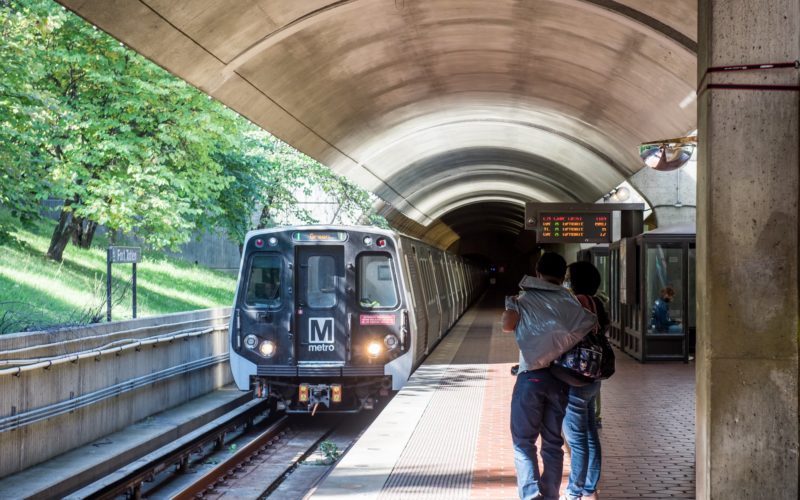
Successful campaigns to improve transit – and urban mobility more generally – depend on key contributions from community advocates, city government, and transit agencies. The venues are few and far between for these three groups to informally collaborate, refine their efforts and share ideas. Members of each of these groups, as well as academic researchers, local bloggers, and area residents gathered on Saturday June 20 for the inaugural StreetsCamp, held at the Georgetown University School of Continuing Studies in downtown Washington, DC.

Photo Credit: Matthew cheng
I attended on behalf of TransitCenter, learning from and about this community of local experts. As the organization’s newest member I have a lot to absorb about the state of transit planning around the US, so this was a great opportunity to hear directly from DC-area folks about their approaches to addressing the problems they face. I asked Stewart Schwartz, executive director of the Coalition for Smarter Growth (CSG), to comment on the motivations behind StreetsCamp:
Our vision for StreetsCamp is to create a space where at least once a year our regional movement for a sustainable and equitable region can come together, share strategies and learn new skills, bring in new people, and go home energized to keep working. We see it as an opportunity to combine learning about smart growth subject matter — zoning, transit, biking infrastructure, etc — with learning the skills be an effective activist or advocate — like storytelling, blogging, and building coalitions.
And indeed, the day’s sessions (link includes presentation slides) ranged from writing and communications to advocacy strategy, from technical sessions covering best design practice to a discussion of gender and public space (for more, search the Twitter hashtag #streetscamp). As an un-conference, StreetsCamp’s basic structure will be familiar to those who have attended Transportation Camp, whose energy, creativity, skills training, and movement-building successes provided inspiration for CSG.
In one of the sessions I attended, Allison Davis and Kristin Haldeman from Metro’s Office of Planning detailed some of the agency’s work to improve pedestrian access to existing transit stations. By increasing walking access to Metro stations, they will increase ridership. This is a very practical approach to increasing rail accessibility and ridership, since much of the system is operating well under its capacity. Metro’s emphasis on maximizing the use of existing infrastructure aligns with the success of Arlington’s transportation demand management (TDM) program, which has reduced traffic volumes by more than 40,000 cars daily, using only information campaigns and incentives.
This is what Arlington’s TDM agency accomplishes, with no infrastructure. Equivalent of a major highway. #streetscamp pic.twitter.com/LUsrF9fh7h — BeyondDC (@beyonddc) June 20, 2015
Metro’s efforts are all the more important in the face of decreasing total Metrorail ridership, which can in part be tied to the significant gap between commuter pre-tax benefits for transit and parking (we cover this challenge in detail nationally, in our report Subsidizing Congestion). Simply put, the pre-tax transit benefit does not cover the average Metro rider’s monthly commute costs.
Metro’s presentation was in large part responding to a frustration with frequent requests for new rail extensions throughout the region. Metro’s case for focusing on increased system access and utilization sends a clear message to advocacy groups that this is a point of alignment in their respective strategies, and one where advocates’ support could help yield improved transit outcomes. Conversations like those that took place at StreetsCamp can be a crucial point of engagement between agencies, city leadership, and community advocates to share both successes and frustrations, and to refine their messaging efforts.
To this end, Stewart lays out a clear vision for the future: “Ultimately, our goal is to have a stronger, more connected movement of advocates working in small and large ways for a more sustainable, equitable region — winning change at the local level and strengthening our regional movement.” We share this goal for the DC metro and communities across the country, and hope to see more events like StreetsCamp strengthening local advocacy movements.
We’d love to hear stories from other communities engaging in similar conversations – what makes them successful? How have events like StreetsCamp supported your work, either directly or indirectly?
#streetscamp and the @betterDCregion descend upon @GeorgetownURP with over 130 transit advocates pic.twitter.com/c4ShxPUyvG
— Uwe S. Brandes (@UweBrandes) June 20, 2015
 On the Brink: Will WMATA’s Progress Be Erased by 2024?
On the Brink: Will WMATA’s Progress Be Erased by 2024?
The experience of being a WMATA rider has substantially improved over the last 18 months, thanks to changes the agency has made like adding off-peak service and simplifying fares. Things are about to get even better with the launch of all-door boarding later this fall, overnight bus service on some lines starting in December, and an ambitious plan to redesign the Metrobus network. But all of this could go away by July 1, 2024.
Read More What’s Going on With Transit Service at the Seven Highest Ridership U.S. Cities? DC Edition
What’s Going on With Transit Service at the Seven Highest Ridership U.S. Cities? DC Edition
Mechanical problems with the 7000-series train cars and lapsed rail operator certifications have caused rail service levels on WMATA to plummet, but the agency is running 100% of pre-pandemic bus service.
Read More